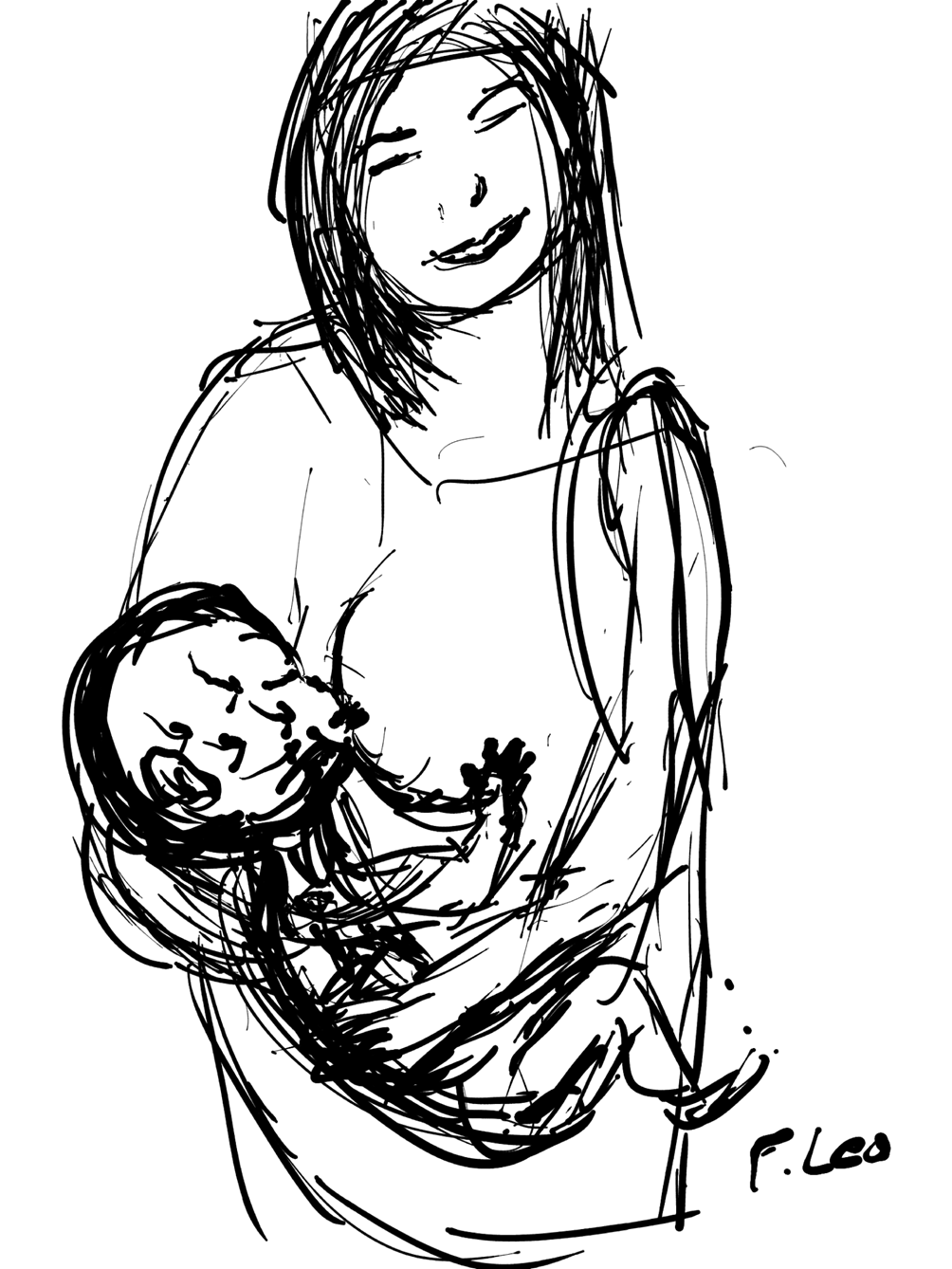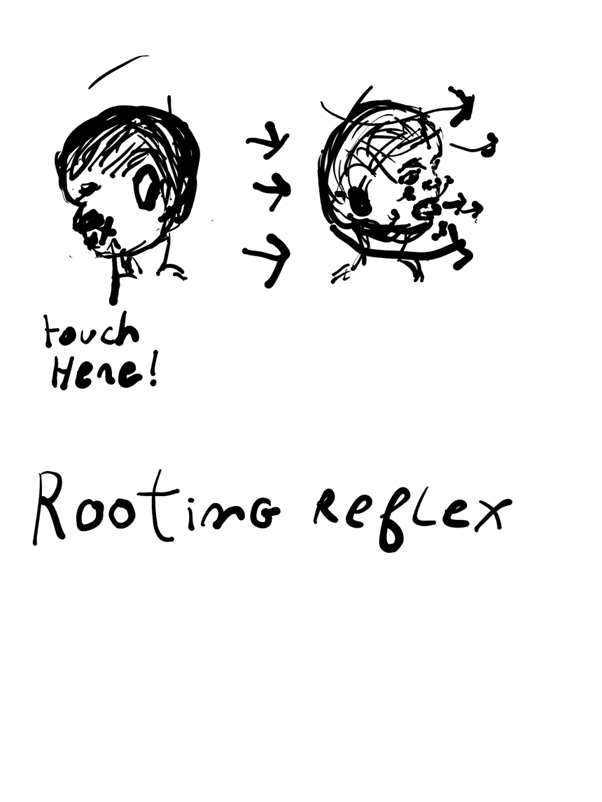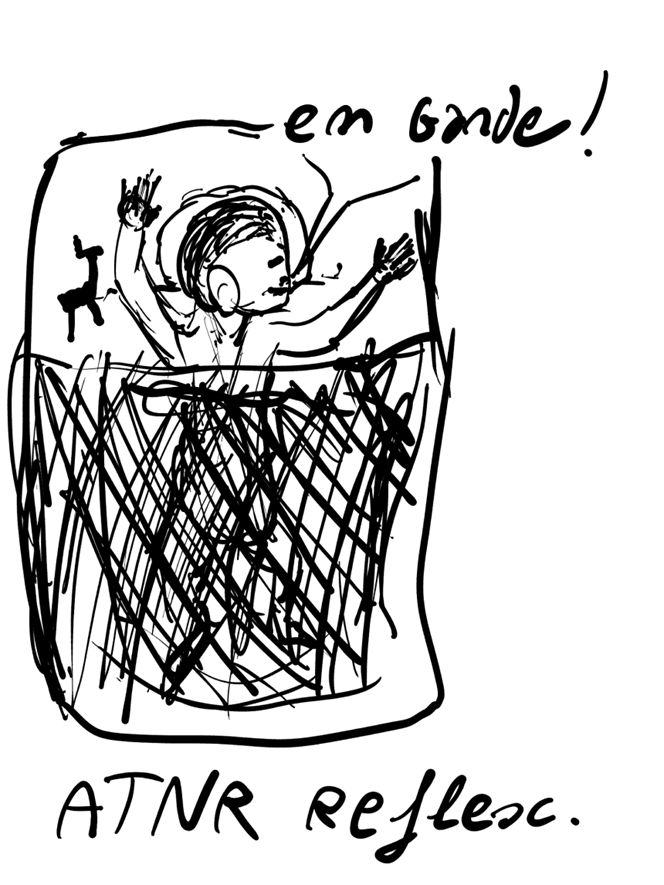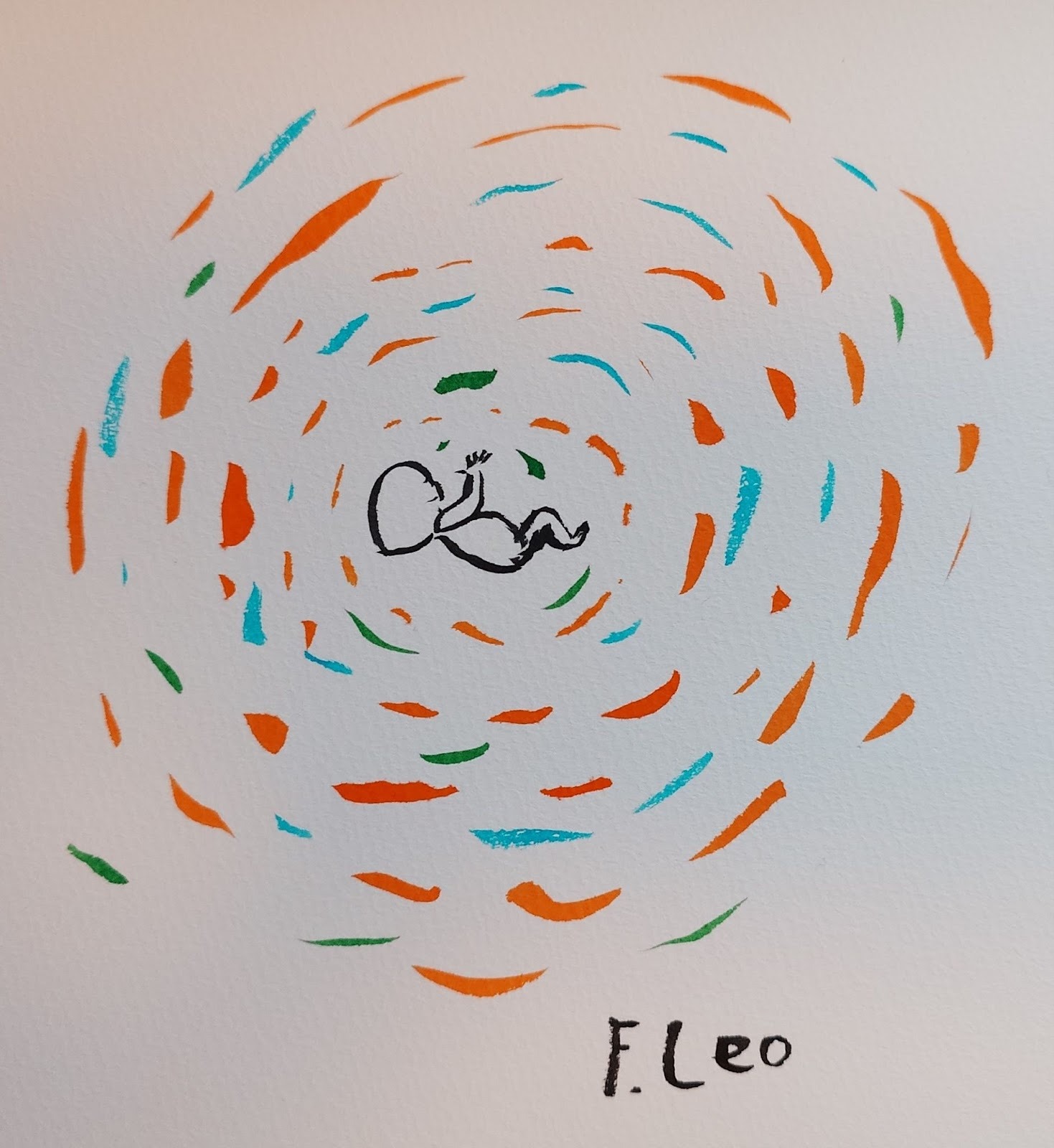
What is the main difference between a baby foal and a baby human at birth? Minutes after birth, a baby foal can run around, but a baby human will be nestled in their mother’s arms. It will take at least a year before the baby human can walk, and several more for them to run.
A baby human is born with a big head and brain, and is not yet big or mature enough to run around, walk on their hands or do somersaults. Yet, at this stage, the baby human needs to be able to feed, learn, interact with their family and learn to operate that thing that is called the human body.

At birth, humans are incapable of having much control over their movements. Yet, they are still able to breathe, breastfeed, burp, scratch their faces with their little nails, digest, smile and many other things. The ability of the body to move on its own is called a reflex.
A baby’s reflexes are called primitive reflexes. These reflexes help the little human to come down the birth passage, take their first breath, have their first meal, suckle their thumb, hold your finger, smile for the first time, and many other things.
Likewise, taking their first step is a primitive reflex in foals – and over a mere few hours, they develop voluntary co-ordination. Stepping is a primitive reflex in foals in order to ensure their survival – like baby turtles racing towards the ocean after hatching.
As humans, we rely on our caregivers to look after us for survival – which is why smiling is an important primitive reflex, as it supports bonding.
In short, primitive reflexes are here to help us survive and assist in making connections between our brain and body.
The important reflexes needed for breastfeeding
Primitive reflexes respond to specific stimuli, for example, if you stimulate the lips of a baby, they will elicit a suckling response. This is called the suckling reflex.
Sensory stimulation of the corner of the lips and nearby cheek will cause a baby human to reach with their tongue and turn their head towards that side: the rooting reflex.

Turning the head to one side will also trigger another reflex which makes one elbow straight and bends the other – the asymmetrical tonic neck reflex (ATNR).

It also allows the hand to be nearer to the mouth, and encourages thumb suckling. Thumb suckling improves mapping of the hand and mouth, and builds the foundations for coordination. It supports body mechanics, helping stretch out and mold the head which was heavily compressed at birth.
Last, but not least, there is a reflex that will tighten the hand into a fist while the baby is suckling: the Babkin reflex. If the jaws of the little human are tight, very often the baby human will have their thumb tucked inside their fist.

These reflexes will be crucial in helping the baby learn to latch onto the breast and feed, helping them control their mouth and tongue. It helps them turn their head to at first facilitate feeding, but also to keep track of their parents’ faces, which is the foundation for socialisation.
The ANTR and Babkin reflexes help the baby human become more aware of their hands and arms. It will take a lot of maturation before the baby can operate complex hand to mouth and hand to eye co-ordination skills.
Most of these reflexes overlap. The rooting reflex stimulates reaching with the tongue and turning the neck. The ANTR links neck and head rotation with the position of the arms, and the Babkin reflex links the hands with the jaw.
Once both skill and movement is achieved, the primitive reflex recedes, so that the baby human is in charge of their movements. The involuntary becomes voluntary. Mission achieved.
What’s the link between your baby’s vagal system and primitive reflexes?
The primitive reflexes which assist breastfeeding, are connected directly and indirectly to the vagal system that supports two different functions. The first is communication and social engagement, I believe a baby smile is its purest expression. The other is related to feeding, digestion, calmness and rest - think how relaxed or sleepy you are after a nice meal.
When a threat overwhelms your ability to function, you activate the dorsal vagal state, which triggers a slowing down, or freezing response, where movement feels heavy. A good example of this is a hibernating bear.
When newborns are overwhelmed by negative stress, it can cause difficulties breastfeeding. Negative stress triggers for infants can be caused by strong contractions during labour.
Another cause is tongue tie release. Although most of the time, tongue tie release makes feeding much easier, sometimes it may stress the infant negatively. Tongue tie is when a band of tissue underneath the tongue restricts movement and impacts breastfeeding. The process of releasing it - cutting it, can surprise the newborn, especially if the tie was significant. Think of an elastic being released in your mouth, not pleasant - even as an adult. That sort of shock can freeze the primitive reflexes, which might make latching and feeding difficult and can cause reflux.
You can help your little one by gently caressing their lips and engaging with the tongue to stimulate suckling. You can also change the angles of the dummy to improve tongue agility.
If feeding is difficult, the little one will tend to hold their thumbs in their fingers. You can gently wrap your hand around their little hand and gently squeeze it to help the fingers and the jaws relax, working with the babkin reflex.
We are social creatures from birth. And a baby’s social relationships, and the level of stress felt by the family can also be a factor in their vagal state and ability to breastfeed. If expecting parents experience mental, emotional or physiological stress like moving home, or a sibling falling sick, before, during or after labour, the baby might pick up on that stress.
Of course, we want our baby to know that they are safe and loved. A lot of this is actually communicated in our vocal tones, facial expressions but also body language. Babies are expert readers in that field, as they have so much to learn.
A baby’s main concern is how safe and available their mother is, followed by their own needs. When your baby is unhappy, make them feel that we have their attention and that we (baby and parents) are good. Ideally this is the state that we want to be in if we need to help our little one to integrate their reflexes and gain confidence when experiencing breastfeeding difficulties.
Osteopaths call this the meeting place, a neutral ground for helping others to thrive. This is natural for mothers and parents in general, but we can get easily distracted from it. Our baby will quickly remind us about it sometimes by crying, sometimes by a loving smile and later on in their life by a drawing or a hug.

The meeting place is like the light that makes us see, the air that we breathe but cannot see. It is a medium of non-verbal connection, of being and of loving.
Need some extra help?
If you need some extra help, you’re not alone. Finding yourself in that meeting place with an unhappy baby can be hard work, particularly when you’re running on little sleep and struggling to function yourself. Osteopathy can help give you tools and techniques so you can land in this meeting place more easily.
Schedule your appointment with Florence here.

'%3e%3cg%20id='Group_40'%20data-name='Group%2040'%20clip-path='url(%23clip-path)'%3e%3cpath%20id='Path_45'%20data-name='Path%2045'%20d='M23.55,44H20.457c-.123-.028-.245-.066-.37-.083-.736-.1-1.481-.155-2.208-.3a21.577,21.577,0,0,1-13.2-8.085,21.482,21.482,0,0,1-4.459-16.6A20.745,20.745,0,0,1,5.335,7.652,21.54,21.54,0,0,1,25.058.2,20.789,20.789,0,0,1,36.271,5.248a21.634,21.634,0,0,1,7.392,12.913c.136.757.226,1.523.337,2.284v3.1c-.094.692-.167,1.387-.287,2.074A21.768,21.768,0,0,1,36.981,38.1a21.477,21.477,0,0,1-11.108,5.555c-.77.136-1.548.229-2.323.341M9.457,21.975c0,1.776-.039,3.553.011,5.327a7.607,7.607,0,0,0,1.453,4.542,7.129,7.129,0,0,0,5.74,2.691c1.931.078,3.865.113,5.8.084a54.556,54.556,0,0,0,6.3-.278,6.248,6.248,0,0,0,5.388-4.6,11.62,11.62,0,0,0,.441-3.692c-.018-3.407-.033-6.816-.133-10.221A6.349,6.349,0,0,0,33.06,12.1a7.045,7.045,0,0,0-5.8-2.651c-3.506-.057-7.014-.04-10.521,0a7.593,7.593,0,0,0-4.267,1.231,7.01,7.01,0,0,0-3,5.967c-.064,1.773-.013,3.551-.013,5.327'%20fill='%23fff'/%3e%3cpath%20id='Path_46'%20data-name='Path%2046'%20d='M21.981,11.566c1.971.066,3.932.089,5.887.21a4.372,4.372,0,0,1,4.338,4.356c.123,3.145.12,6.3.12,9.446a14.831,14.831,0,0,1-.267,3.11A4.215,4.215,0,0,1,27.911,32.2c-3.187.111-6.379.117-9.569.119a14.288,14.288,0,0,1-3.024-.261A4.206,4.206,0,0,1,11.8,27.916c-.112-3.175-.121-6.354-.121-9.532a14.84,14.84,0,0,1,.272-3.11,4.249,4.249,0,0,1,4.12-3.495c1.969-.119,3.945-.146,5.909-.213m6.487,10.447a6.466,6.466,0,1,0-6.475,6.448,6.429,6.429,0,0,0,6.475-6.448m.287-5.26a1.508,1.508,0,1,0-1.515-1.486,1.515,1.515,0,0,0,1.515,1.486'%20fill='%23fff'/%3e%3cpath%20id='Path_47'%20data-name='Path%2047'%20d='M21.983,26.2a4.211,4.211,0,1,1,4.229-4.169A4.193,4.193,0,0,1,21.983,26.2'%20fill='%23fff'/%3e%3c/g%3e%3c/g%3e%3crect%20id='Rectangle_1422'%20data-name='Rectangle%201422'%20width='46'%20height='46'%20fill='none'/%3e%3c/svg%3e)